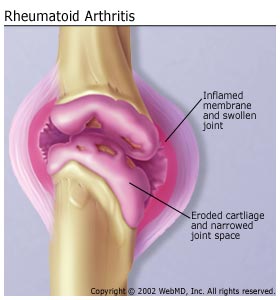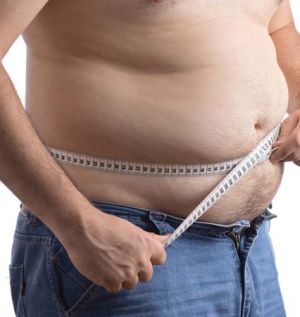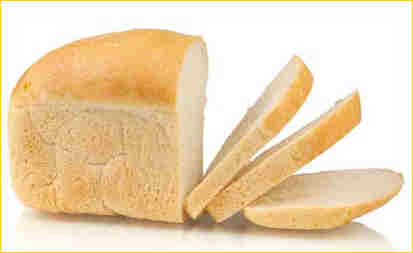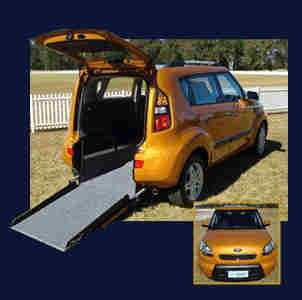|
Radschool Association Magazine - Vol 39 Page 11 |
|
Privacy Policy | Editorial Policy | Profit Policy | Join the Association | List of Members | Contact us | Index | Links |
|
Health and Life style. |
|
Back Go to page: 1 2 3 4 5 6 7 8 9 10 11 12 13 14 15 16 17 18 19 20 Forward |
|
A Love Story.
I will seek and find you. I shall take you to bed and have my way with you. I will make you ache, shake and sweat until you moan and groan. I will make you beg for mercy, beg for me to stop. I will exhaust you to the point that you will be relieved when I'm finished with you. And, when I am finished, you will be weak for days. All my love,
The Flu!
Now that we have your attention, it’s time to remind you to get your flu shots. The flu is passed from one person to another by coughing or sneezing and most healthy adults recover within a week or so. But! - some people, especially those aged 65 and over and those with certain chronic illnesses like heart or lung disease, can develop complications such as pneumonia or heart failure. Don’t risk it. See your doctor now and get the flu shot and also the pneumonia shot (this is required once every 5 years) and don’t spend part of this winter in bed all stuffed up.
If you are allergic to eggs, make sure you should tell your doctor before you get the needles as you could suffer side effects.
You can isolate yourself from catching the flu by having the vaccine, but you must have one every year as the strain of flu changes from year to year. As my old nan used to say, “it’s better to be safe than sorry!!”
The needles are free if you are:
It is important to note that the vaccine is provided at no cost, however a consultation fee may apply. Most doctors won’t charge you for the consultation as they will bulk bill it – but check anyway.
We tried to confirm that holders of the Health Card were also eligible (we don’t think so), but after holding on the phone to Centrelink for 20 minutes – we gave up.
|
|
F-111 Tank reseal
Defence still require F111 Deseal/Reseal participants who worked on F111 aircraft between 1973 and 2000 to urgently come forward and participate in the Jet Fuel Study. Participants only need to supply a blood sample.
Defence currently has only have 35 personal and need at least 200 for the Study to go ahead. Volunteers do not need to live in Brisbane. They can live anywhere in Australia.
If you worked on the reseal/deseal program, call the Defence Service Centre on 1800 333 362 now.
|
|
Arthritis. Reprinted with permission: The Men's Health Peer Education Magazine March 2012 (DVA).
Arthritic joint pain and chronic bone pain can be a major cause of functional disability and decreased quality of life as we get older. While analgesic or anti-inflammatory medications can provide temporary relief, a targeted and well-structured exercise program will attack the root cause of the pain - which is related to musculoskeletal degeneration, loss of muscle mass and inactivity.
From 30 years of age, both men and women gradually lose 30-50% of their muscle and bone mass. This is partly due to the decline in physical activity as we age. As the muscles provide significant support to the joints, this loss of strength increases the load on the joint structures. The loss of muscle tension from the muscle pulling on the bone also means that the bone becomes weaker.
Strength of the muscle that crosses the affected joints will reduce the load on the joint structures, reducing arthritic pain. Weight training will increase the muscle strength and reduce the loading on the joint. Joint movement also causes the release of synovial fluid in the joint, the natural joint lubricant, reducing friction and pain. As arthritic joints are “stiff”, gentle stretching to keep the joints mobile, is also strongly recommended. A reduction in body weight will also reduce the load on the hip and knee joints. An increase of one kilogram in body weight will increase the load on the knee and hip joints by between 3-6 kg, with a proportional increase in joint pain. Any poor sitting posture or uneven gait should also be corrected.
Weight training will increase bone mass and strength and reduce bone pain associated with osteoporosis. For individuals with osteoporosis, it is essential that the strength training program is designed by an exercise physiologist to ensure that the exercise prescription is individualised, the intensity appropriate, and the exercise form correct to avoid any risk of injury. The inclusion of some low impact exercise should also be considered, as well as some balance training to prevent premature falls.
Exercise, especially strength training, is an essential component of preserving and improving your musculoskeletal health as you age, reducing your joint and bone pain, and improving your functional fitness.
Discuss with your GP if an exercise program is suitable for you. Ask if you could be referred to an accredited exercise physiologist to design a suitable exercise program to assist you reduce your musculoskeletal pain. The services provided by an exercise physiologist are funded by DVA. An exercise physiologist can be found in your local area by consulting the “find an exercise physiologist” on the Exercise and Sports Science Australia website www.essa.org.au
Last issue we suggested the only way to receive this benefit from DVA was to use NJF Exercise Physiologists – this is not so. You can use any Exercise Physiologist (EP), all you need is a referral from your local doctor (as mentioned last issue) however we recommend that you use one that is affiliated with a gym and not one that practices from their own rooms. The benefits of a gym affiliated EP are obvious, you have access to a wider range of equipment.
|
|
Weight Problem??
Are you finding that the trousers and/or shorts you used to wear last near have ‘shrunk’ a bit and are now a bit tight? Cynics would say there is nothing wrong with your pants/shorts but instead you’ve wacked on a few pounds. Could that be the truth??
Seriously, most of us are a little too heavy and could quite safely
lose a few pounds – but how is the question. Most of us carry the
extra weight around the middle and while it
Belly fat is usually caused by eating too much or by not exercising sufficiently. If you take on more fuel that you use, you’re going to put on weight, that’s a simple mathematical fact. And for people that are getting on a bit, it can also be a result of your body's metabolism slowing down a bit.
There are lots of different ways to lose that extra weight around your middle, there are thousands of fad diets that promise to lose up to 100kg in 10 seconds, you can join one of those health clubs they flog on TV, sign up for home delivered no-fat food, even have a stomach clamp but they are all a bit drastic – there are easier ways.
First:- Eat a healthy breakfast. This is one of the best ways to lose belly fat. It activates your metabolism helping your body burn fats more efficiently. If you don’t eat, your body thinks “Hello, we’re being starved” and stops using its resources.
Second:- Get physical in the morning. Before you have breakfast, exercise for about 30 minutes, this can be nothing more than a brisk walk which apart from burning up excess fat is also quite enjoyable and makes you feel good. The exercise has to be done before you eat so your body’s metabolism is geared to use up the body’s reserves.
Third:- Have an adequate sleep. Sleep is one of the body’s very important pastimes, it is something the body just cannot do without. You can go without sex for yonks, you can go without food for about 2 weeks without any serious consequences, but try and go without sleep for 2 weeks and you’ll be a jibbering mess. A nana nap is great during the day, but nothing beats a good night’s sleep. Sleep not only rejuvenates the body’s tired old muscles, it also maintains the body’s metabolism allowing it to function properly.
|
|
If it weren’t for marriage, men and women would have to fight with total strangers.
|
|
Is white bread really that bad for you?
The Swiss government has been aware of the dangers of eating white bread for decades and in order to get its populace to stop eating it, it placed a tax on its purchase. The tax money is given to bakers to reduce the price of whole wheat bread to encourage people to switch.
The Canadian government passed a law prohibiting the “enrichment” of white bread with synthetic vitamins. Bread must contain the original vitamins found in the grain, not imitations. Essentially, white bread is “dead” bread. Frequently, consumers are not told the truth about this and the so called “enriched” flour.
Why is the color of white bread so white when the flour taken from wheat is not?
Both white and wholemeal breads are made of wheat, water and yeast. The difference between the two is the part of the wheat used in the flour. A kernel of wheat has three main components: the endosperm, bran and germ.
In white bread, only the endosperm is used. Unfortunately, it’s the bran and the germ that are rich in proteins, dietary fibre, essential fats, vitamins and minerals.
Worse yet, when the endosperm is separated, a layer of skin on the wheat kernel – which also has important nutrients – falls off. This is why wholemeal naturally contains moderate levels of magnesium, folate, iron, selenium and zinc, while white bread needs to be artificially enriched to contain any of the good stuff.
Also, the flour used to make white bread is chemically bleached and when you are eat white bread, you are also eating residual chemical bleach. Different flour mills use different chemical bleaches, all of which are pretty bad for you.
Here are a few of them:
· oxide of nitrogen, · chlorine, · chlorides, · nitrosyl and · benzoyl peroxide mixed with various chemical salts.
One bleaching agent, chloride oxide, combined with whatever proteins are still left in the flour, produces alloxan which is a poison and has been used to produce diabetes in laboratory animals. Chlorine oxide destroys the vital wheat germ oil. It will also shorten the flour’s shelf life.
In the process of making flour white, half of the good unsaturated fatty acids, that are high in food value, are lost in the milling process alone and virtually all the vitamin E is lost with the removal of wheat germ and bran. As a result, the remaining flour in the white bread you buy, contains only poor quality proteins and fattening starch.
The University of California, College of Agriculture found that about 50% of all calcium, 70% of phosphorus, 80% iron, 98% magnesium, 75% manganese, 50% potassium, and 65% of copper is destroyed. If that is not bad enough, about 80% thiamin, 60% of riboflavin, 75% of niacin, 50% of pantothenic acid and about 50% of Pyridoxine is also lost.
What about the GI
White bread has a high glycaemic index (GI). The GI measures how blood glucose levels will change after you’ve eaten certain foods. High-GI foods make levels quickly rise, and then fall. This sharp drop of glucose from your blood means your body will signal that you’re hungrier much sooner than if you ate a low-GI food.
Recent studies have shown that a low-GI diet may help weight control, diabetes and prevent some forms of cancer. According to the International Table of Glycemic Index and Glycemic Load, published by the University of Sydney, white bread has a GI of 75. However – and this is surprising – wholemeal bread has a similar GI rating.
That brown bread doesn’t taste so bad after all – does it??
|
|
The Motor Vehicle Compensation Scheme.
The Motor Vehicle Compensation Scheme (MVCS) was established under the
Military Rehabilitation and Compensation Act 2004 (MRCA). A
person’s acceptance into the scheme is determined by the Military
Rehabilitation and Compensation Commission.
The scheme assists serving and former Australian Defence Force members, who have suffered a significant injury, disease or impairment caused by their service, to regain a degree of transport mobility. Through the Department of Veterans’ Affairs, the Australian Government provides assistance, including financial compensation, with motor vehicle modifications or the purchase of a specific vehicle for those who are eligible.
First, to be considered eligible under the MVCS, you must have your impairment accepted under the MRCA and your impairment must be permanent. If it is not, you may still be eligible for short-term compensation until the barriers to your mobility and functioning are addressed, for example through a rehabilitation program.
People seeking help under the scheme need to have had their condition accepted under the MRCA and then be clinically assessed for eligibility under the MVCS.
You can read a booklet on the scheme HERE.
|
|
Back Go to page: 1 2 3 4 5 6 7 8 9 10 11 12 13 14 15 16 17 18 19 20 Forward |



 doesn’t look pretty, it
is also unhealthy. So!!, how do we love that belly fat. Well, before
we attack that un-necessary extra ballast, we need to know how and
why it got there in the first place.
doesn’t look pretty, it
is also unhealthy. So!!, how do we love that belly fat. Well, before
we attack that un-necessary extra ballast, we need to know how and
why it got there in the first place.
